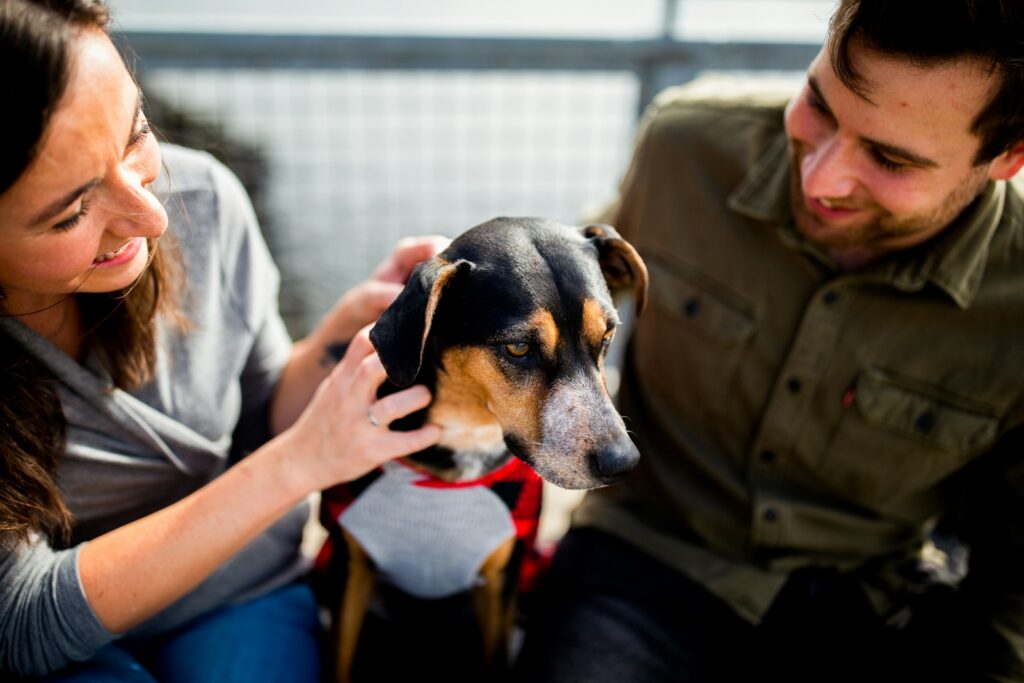Imagine this: You’re snuggling with your new puppy, enjoying those precious early days, when you notice them scratching furiously.
A closer look reveals tiny black dots hopping around their fur—fleas! Or worse, a tick latched onto their delicate skin. If you’ve been there, you know the panic that sets in. Fleas and ticks aren’t just nuisances; they’re threats to your puppy’s health and happiness.
But don’t worry—I’ve got you covered with this expert-backed guide to flea and tick prevention for puppies. Whether you’re a first-time pet parent or a seasoned dog lover, you’ll find safe, practical, and proven strategies to keep your pup itch-free and healthy.
Table of Contents
Why Flea and Tick Prevention Matters for Puppies
Puppies are especially vulnerable to fleas and ticks. Their small size and developing immune systems mean even a minor infestation can spiral into a major problem.
Fleas can cause anemia, allergic reactions, and even transmit tapeworms. Ticks, meanwhile, carry diseases like Lyme disease and Rocky Mountain spotted fever, which can be life-threatening if untreated.
According to the American Veterinary Medical Association (AVMA), fleas affect over 50% of dogs in the U.S. at some point, and ticks are a growing concern due to climate shifts expanding their habitats.
Dr. Jane Smith, a veterinarian with 15 years of experience, explains, “Puppies under six months are at higher risk because their bodies can’t handle aggressive infestations as well as adult dogs.” Prevention isn’t just about comfort—it’s about survival.
Understanding Fleas and Ticks: What You’re Up Against
The Life Cycles of Fleas and Ticks
Fleas go through four stages: egg, larva, pupa, and adult. A single flea can lay up to 50 eggs a day, turning a small problem into an infestation in weeks. Ticks, on the other hand, latch onto hosts, feed for days, and drop off to lay thousands of eggs. This resilience makes them tough to eliminate without a solid plan.
How Puppies Get Infested
Your puppy can pick up fleas or ticks from the backyard, dog parks, or even other pets. Ticks thrive in tall grass and wooded areas, while fleas hitch rides on anything warm-blooded—including you!
Signs of Infestation
Watch for:
- Excessive scratching or biting at skin
- Red, irritated patches
- Tiny black specks (flea dirt) or visible ticks
- Lethargy or pale gums (a sign of anemia)
Safe and Effective Flea and Tick Prevention Methods for Puppies
Veterinary-Recommended Treatments
Vets often recommend age-appropriate options like:
- Topical treatments: Drops applied to the skin (e.g., Frontline Plus). Safe for puppies over 8 weeks.
- Oral medications: Chewables like NexGard, typically for pups 6+ weeks.
- Flea collars: Seresto offers 8 months of protection for puppies over 7 weeks.
Always check labels and consult your vet, as some products are toxic to young pups.
Natural Remedies
For a gentler approach:
- Apple cider vinegar: Dilute with water and spray on fur to repel fleas.
- Diatomaceous earth: Sprinkle food-grade powder on bedding to kill fleas naturally.
- Essential oils: Use vet-approved oils like lavender sparingly—never undiluted.
Environmental Control
Wash bedding weekly in hot water, vacuum daily, and treat your yard with pet-safe sprays. Fleas live 90% of their lives off your pet, so tackling your home is key.
Top Products for Flea and Tick Prevention in Puppies
Here’s a quick rundown:
- Seresto Flea and Tick Collar: Long-lasting, low-maintenance. Con: Pricey upfront.
- Frontline Plus: Kills fleas and ticks on contact. Con: Not oral, so reapplication is needed.
- NexGard: Tasty chewable that works fast. Con: Prescription required.
Studies from the Journal of Veterinary Parasitology show these products reduce infestations by over 95% when used correctly.
Real-World Tips and Case Studies
Practical Tips from Pet Owners
- “I brush my puppy daily with a flea comb—it catches stragglers early!” – Sarah, dog mom.
- “A $10 vinegar spray saved my carpets from a flea invasion.” – Mike, pet owner.
Case Study: Max’s Recovery from Flea Anemia
Max, a 10-week-old Lab, was lethargic and pale when his owner, Emily, noticed fleas. A vet diagnosed flea anemia—his red blood cell count had dropped dangerously low. Max bounced back in two weeks with a vet-prescribed topical treatment and environmental cleanup. Emily’s takeaway? “Start prevention early—it’s easier than a cure.”
How to Choose the Best Flea Prevention for Your Puppy
Picking the right flea and tick prevention for your puppy can feel overwhelming with so many options—collars, chewable, topical drops, oh my! But don’t stress. It’s all about finding what’s safest and most effective for your pup. The key?
Tailoring your choice to their unique needs based on age, weight, breed, and lifestyle. Let’s break it down step-by-step so you can confidently protect your furry friend from those pesky parasites.

Age: Why Timing Is Everything
Your puppy’s age is the first thing to consider when choosing a flea prevention method. Puppies under 6 weeks are too young for most commercial products—their tiny bodies can’t handle the chemicals yet.
For example, popular topical treatments like Frontline Plus are only safe for pups 8 weeks and older, while oral meds like NexGard require a minimum age of 6 weeks.
Using these too early could lead to overdosing or irritation, which is the last thing you want for your little one.
If your puppy is younger than 6 weeks and you spot fleas, don’t panic. Call your vet right away. They might recommend a gentle flea comb or a mild, vet-approved shampoo like Dawn dish soap (yes, the stuff you use on dishes!) to manually remove fleas.
Dr. Emily Carter, a veterinary parasitologist, notes, “For neonates, mechanical removal is often the safest option until they’re old enough for medication.” Age-specific guidance is critical for safe tick prevention for puppies too—ticks can be just as dangerous, and prevention needs to match their development stage.
Weight: Precision Saves Lives
Dosage is a big deal when it comes to puppy flea treatment, and that’s tied directly to your pup’s weight. Most products are formulated based on weight ranges—like 4-10 pounds or 10-20 pounds—so you’ll need an accurate number.
Grab a pet scale or pop into your vet’s office for a quick weigh-in. Guessing can lead to under-dosing (which won’t kill the fleas) or overdosing (which could harm your puppy).
For instance, a 5-pound Chihuahua needs a much smaller dose of a chewable like Bravecto than a 15-pound Golden Retriever pup.
Overlooking this can have serious consequences. A 2023 study in the Journal of Veterinary Medicine found that improper dosing accounted for 12% of adverse reactions to flea medications in young dogs.
So, weigh your pup, double-check the product label, and stick to the recommended amount. It’s a simple step that makes flea and tick prevention for puppies both safe and effective.
Breed: Tailoring to Their Coat and Lifestyle
Your puppy’s breed plays a surprising role in choosing the best flea prevention. Long-haired breeds—like Shih Tzus, Afghan Hounds, or Collies—can hide fleas and ticks more easily in their thick fur.
For these pups, pairing a treatment (like a topical or collar) with regular brushing is a must. A fine-toothed flea comb can catch pests that might otherwise go unnoticed, giving you an extra layer of protection.
Short-haired breeds, like Beagles or Boxers, might not need as much grooming but could benefit more from oral meds that work systemically.
Breed-specific health quirks matter too. Some breeds, like Australian Shepherds or other herding dogs, can carry a genetic mutation (MDR1) that makes them sensitive to certain flea medications, such as ivermectin-based products.
If you’ve got a herding breed, ask your vet for a quick genetic test to rule out risks. Matching prevention to your puppy’s breed ensures you’re not just fighting fleas and ticks—you’re doing it smartly.
Common Mistakes to Avoid
Overusing Products: More Isn’t Better—Stick to Recommended Doses
It’s tempting to think that doubling up on flea treatment will zap those pests faster. If one dose is good, two must be great, right? Wrong. Overusing products doesn’t make them work better—it makes them dangerous. Flea and tick treatments, whether topical drops, oral meds, or collars, are carefully dosed to balance effectiveness with safety. Piling on extra can overwhelm your puppy’s system, leading to side effects like vomiting, tremors, or even seizures.
Skipping the Environment: Treating Only Your Pup Lets Fleas Rebound
Here’s a hard truth: Treating your puppy alone is like mopping the floor during a rainstorm—it won’t last. Fleas are sneaky. Only about 5% of them live on your pet; the other 95%—eggs, larvae, and pupae—are hiding in your carpet, bedding, or backyard. If you skip the environment, those pests will rebound faster than you can say “itchy pup.” Ticks aren’t as homebound, but they can still drop off and lay eggs nearby, setting up a cycle of reinfestation.
Using Adult Dog Products: These Can Overdose a Puppy’s Small System
Adult dog flea products might look like an easy shortcut, especially if you’ve got an older dog at home. But here’s the catch: Puppies aren’t just smaller dogs—they’re more fragile. Products designed for adult dogs often have higher concentrations of active ingredients like fipronil or imidacloprid, which can overwhelm a puppy’s developing liver and kidneys. What’s a mild dose for a 50-pound Lab could be a toxic overdose for a 5-pound pup, causing symptoms from drooling to neurological distress.
FAQ: Flea and Tick Prevention for Puppies
Q: Can I use flea shampoo on a 4-week-old puppy?
A: No, most shampoos are too harsh. Consult your vet for a safe alternative.
Q: Are natural remedies as effective as meds?
A: They can help repel pests but often lack the killing power of vet-approved options.
Q: How often should I check my puppy for ticks?
A: Daily, especially after outdoor playtime.
Conclusion
Fleas and ticks don’t stand a chance against a well-informed pet parent. With the right tools—vet-approved treatments, natural remedies, and a clean environment—your puppy can thrive, itch-free.
Ready to protect your pup? Share your favorite tip in the comments, subscribe for more pet care advice, or consult your vet today for a personalized plan. Let’s keep those tails wagging!





